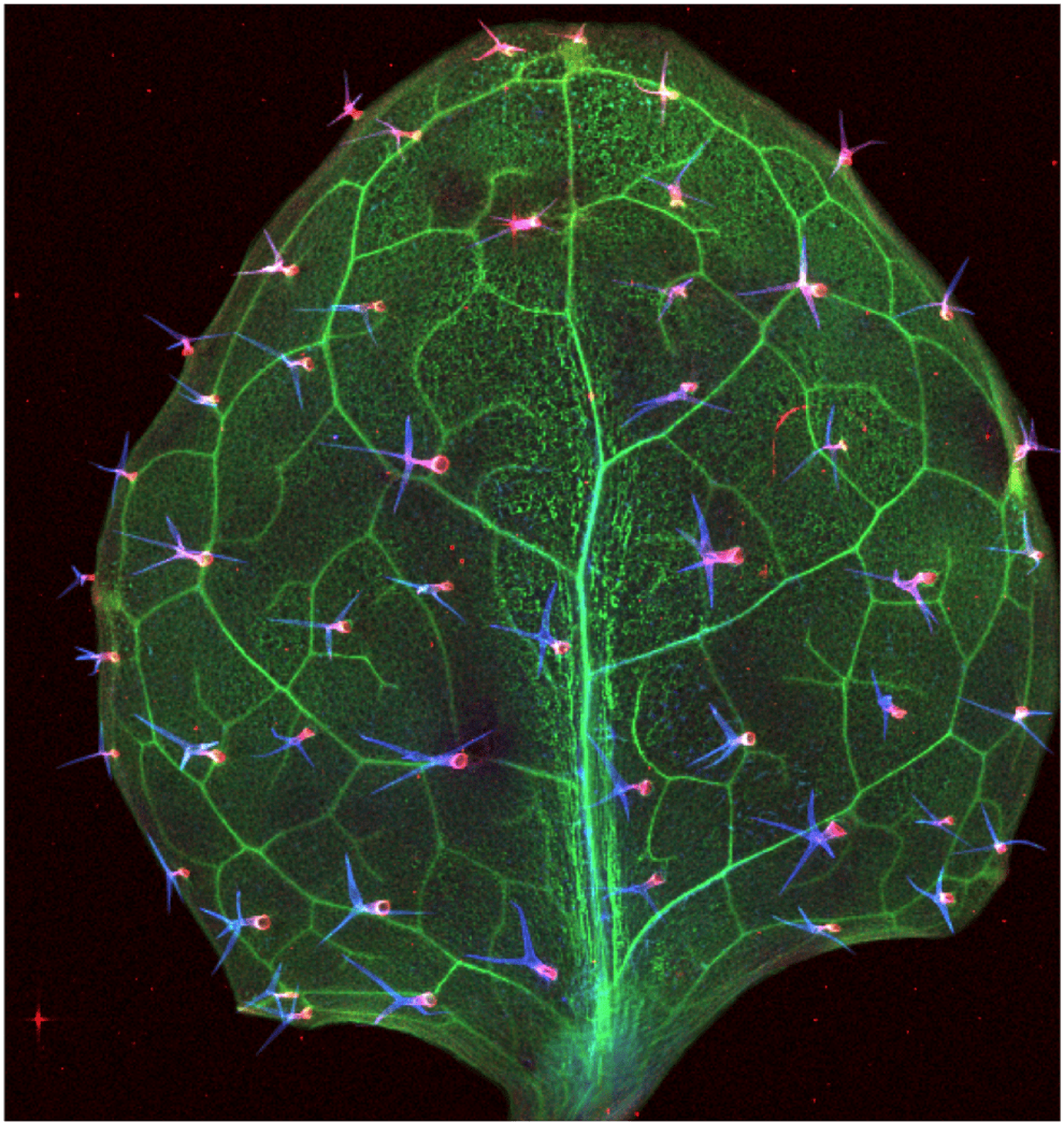 1. Genetic analysis of iron (Fe) sensing in Arabidopsis
1. Genetic analysis of iron (Fe) sensing in Arabidopsis
Iron is an essential nutrient for all organisms. Although Fe is abundant in the earth’s crust, it is a challenge for plants to take in enough Fe because of its low solubility in soil solution. Most plants, except grasses, use an acidification-based Fe uptake system known as Strategy I. Strategy I relies on three biochemical activities: soil acidification, Fe(III) reduction and Fe(II) transport. In Arabidopsis, FRO2 encodes the Fe(III) chelate reductase and IRT1 encodes the Fe(II) transporter. FIT, a basic helix-loop-helix transcription factor, is upregulated under Fe deficiency and regulates the induction of FRO2. IRT1 is also induced in Fe deficient roots, but it is not known yethow IRT1 is regulated at the transcriptional level.
To identify a new upstream regulator of the Fe deficiency response in Arabidopsis, we set up a genetic screen using an IRT1 promoter luciferase fusion construct and isolated mutants that are impaired in reporter gene induction under iron deficiency. The mutant uri (Upstream Regulator of IRT1) displays defects in induction of IRT1. As expected, the uri mutant dies after germination in soil unless fed supplemental Fe. The mutant also fails to induce Fe(III) chelate reductase activity. Microarray analysis shows vast changes in gene expression in the uri mutant under Fedeficiency. FIT is not upregulated, indicating URI’s role is likely to be upstream of FIT in the iron deficiency signaling pathway. F1 plants from a cross between a fit loss of function line and the uri mutant were phenotypically wild type, confirming that the uri line does not have a mutation in FIT. I have narrowed the region containing the uri mutation to approximately 80 Kb on chromosome 3 and am in the process of cloning the mutated gene. We propose a network of Fe deficiency signaling in Arabidopsis where URI serves as an upstream regulator of FIT, IRT1 and FRO2.
2. Characterization of vacuolar Fe transporter VIT1
Plants that serve as better sources of dietary Fe would remedy Fe malnutrition of humans. We have studied the Vacuolar Iron Transporter (VIT1) in Arabidopsis which mediates Fe accumulation in vacuoles and controls the localization of Fe in Arabidopsis seed. In the vit1-1 loss-of-function mutant, Fe dissipated from its normal storage site while Fe content in seeds was not changed. The loss of VIT1 caused delayed metal uptake and resulted in less sensitivity to high metal treatment; this suggested that VIT1-mediated vacuolar Fe transport affects cellular iron dynamics. To further understand the VIT1 role in iron homeostasis, we analyzed transgenic plants that overexpress VIT1 gene. Overexpression of VIT1 gene under the ubiquitous 35S promoter leaded to deregulation of Fe deficiency responses. Fe (III) chelate reductase activity and iron uptake transporter IRT1 were constitutively expressed in iron sufficient roots. Deregulated iron uptake activities in turn, resulted in increased accumulation of Fe, Mn and Zn in leaves; Mn and Zn in seeds. Transgenic plants that express VIT1 driven by seed-specific promoter were created to answer the question whether the seed-specific increase of iron sink could lead to iron accumulation in the seeds.
3. Characterization of ZIP7.
Plants regulate various processes involved in metal homeostasis: uptake from the soil into the root, transport between both cellular and organellar membranes, distribution throughout the plant and detoxification of excess metal ions. To understand metal homeostasis in plants, we have focused on a metal transporter family in Arabidopsis, the ZIP(ZRT/IRT-like protein) gene family. There are 16 ZIP genes in the Arabidopsis genome, which display differential metal specificity, tissue distribution, and gene regulation in respond to metal stresses. For example, the Fe transporter IRT1 is expressed mainly in the roots of iron deficient plants whereas the Zn transporters ZIP1 and ZIP3 are expressed in the roots of Zn deficient plants. To increase our understanding of ZIP gene function, we characterized the AtZIP7 transporter. Complementation tests of various yeast mutants revealed that AtZIP7 transports Fe, Zn and Mn. Expression of AtZIP7 in wild type yeast increased sensitivity to external Hg and Cd suggesting that AtZIP7 is able to transport toxic metal ions. Thus AtZIP7 is a promising candidate for use in phytoremediation of Hg and Cd. RT-PCR analysis showed gene expression predominantly in shoots, suggesting a primary role for AtZIP7 in metal distribution rather than in metal uptake from the soil. The loss of AtZIP7 results in the delayed onset of Fe toxicity. Root ferric iron chelate reductase activity is less induced under Fe deficiency in atzip7-1 plants. The subcellular localization using the GFP protein fusion is under investigation to better understand the role of AtZIP7 in Arabidopsis.
